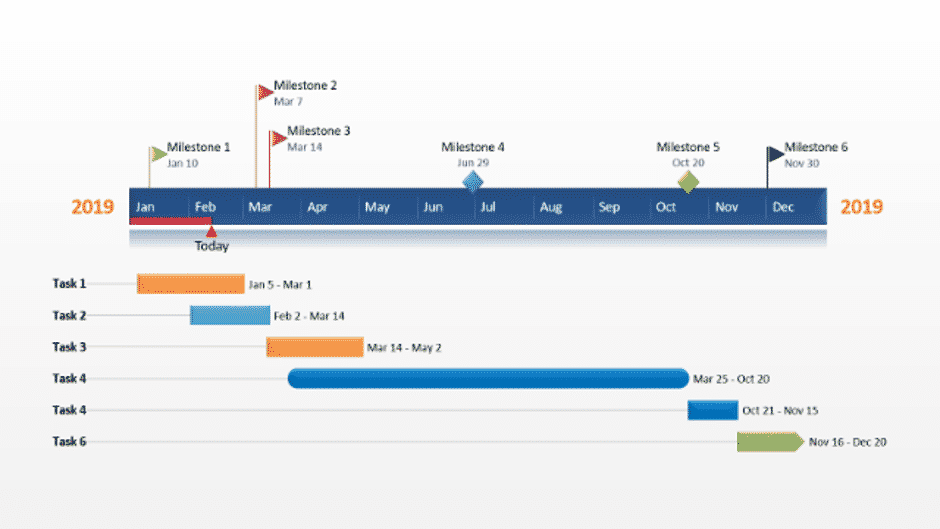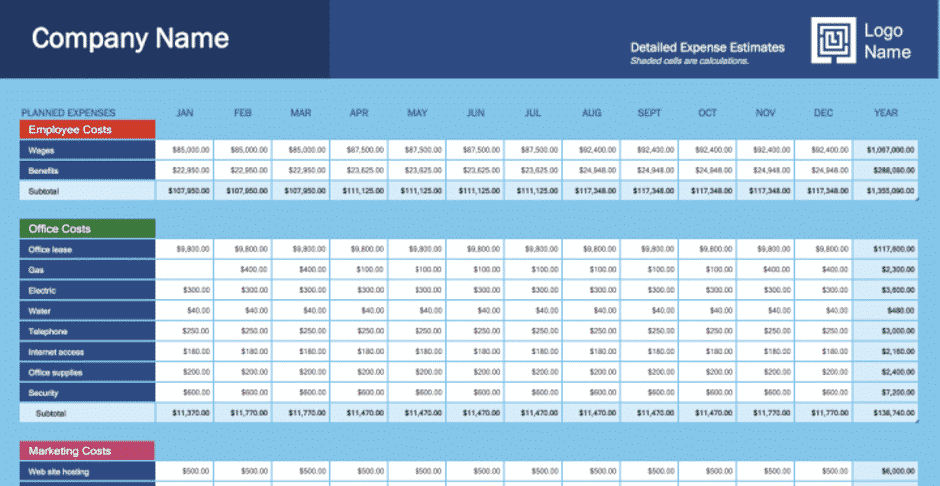Having a startup company in many countries is becoming a common trend and having a startup idea more common than that. But, what does a startup stands for, does having a startup idea is sufficient to go ahead and form a company, and what about the risk assessment. This article will focus on these commonly asked queries and will also discuss that what are the proven 5 ways to choose successful startup ideas.
So, Let’s start from start!
What is a Startup?
A startup is a freshly founded company by one or more entrepreneurs using a novel idea or concept. The idea or concept in totality can be novel or can be a well-known concept conventionally but an implementation method of the same has been made novel or can be improvement over a known idea or concept for fixing current and futuristic loopholes resulting in a novel end-user application. The startup idea generally comes from facing the problem in a real word scenario.
How easy is it to form a startup company?
Well, this can be better understood by a survey conducted by www.startupranking.com regarding a density of startup companies globally and here’s what they have come up with:
The chart shows the density and number of startup companies in 2019. The top 10 countries which have highest number of startup companies are:

So, in few countries, the number of startup companies is pretty high and United States has number of startup companies more than next top 10 countries combined. So, what does it take to have the startup company or more importantly a successful startup idea?
1. Understanding quantum of a problem
Well, I’m not going to say that the world has exactly same number of problems equal to the startup companies in the world. The problems are endless but some problem are needed to be catered right away, some later, some are short lived while others can take years to resolve, some needs less depth of technical understanding while others can only be resolved by a researcher or person with high experience in the same field.
Hence, it is important for an entrepreneur to understand the quantum of the problem and then develop the startup idea and a business model around the startup idea. This is primary issue to be focused on because a high rate of startups faces failure at initial stage itself as stated on https://smallbiztrends.com/2019/03/startup-statistics-small-business.html:

So, first understand whether implementing your startup business idea will solve the problem optimally or not. If yes, then create a step-by-step implementation of the solution, break the procedure month wise and year wise (the projection can be based on an approximation method, accuracy is not a criterion here).
There is an easy way for this – Google the previous or contemporary solutions offered, their success rate and try to find out an implementation of successfully run solution and chart out a similar methodology suiting your business model. Scope out the regional, national and global methodology for implementation and commercialization of the startup-idea based business model.
For example – InMobi was India’s first startup unicorn and still is a major player in cloud-based advertisement platform while there have been many other companies launched in the same field failed to pick up and give competition. This can be clearly seen from the market share of top brands in cloud based advertisement (Source – https://techcrunch.com/2011/11/17/admob-dominates-android-ad-network-market-share/):

Also, if you are thinking how would you create a time based business plan for your startup, get some idea from below given chart:
2. How long can you run your start company by yourself?
This is another important factor that is not factored-in by the entrepreneurs. The cost sheet is very important for estimating a risk for making a startup business idea, a success story. The month by month expenses with especially focusing on expenses on talent hiring for product development, testing and marketing in various stages is important.
A template of the same has been undermentioned:
In the cost sheet, a previous month budget should be optimized in such a way that it should lead to a bootstrapping of further work implementation of the startup idea in successive month. The cost sheet must have an inclusion of an inflow of an income. If you are working and in parallel trying to blossom your startup business idea, then you will need to have a fixed amount from each month’s salary segregated for your startup business idea. Try to smarten things up from your end and accomplish most of the works of your own. You can follow below sequence:
- Plan Your Expenses:
The part of salary should not jump beyond a reasonable value that would cramp you up on a longer run or force you to move toward unnecessary funding rounds or borrowing or taking loans which are called as high-risk factors to collapse a startup in initial stage. If you have to purchase component, devices or services, be reasonable with yourself and try to convince the service provider that you will pay for his services slowly but surely.
- Expense Sheet should be pre-monitored or premeditated:
This is a sure thing to be followed for your startup business idea in case you haven’t already hoarded money for the same. If you are investing from your salary and savings, do it in multiple tranches like every month spend only 20-25% of salary on your startup business idea. Expenditure should be divided into several or monthly tranches and should not be done in a single shot by which you can get broke while you are shopping.
- Revenue sheet should be attached with the cost sheet:
If you have an expenditure plan, then you should have a revenue plan as well and that too a solid one. The revenue plan cannot be an imaginary number that the entrepreneur has come up with simple calculations. Use the contemporarily running businesses and try to make out a rate of revenue that they are generating with respect to the expenditure.
The percentage which hold true for them will certainly hold true for you. And yes, do reduce your revenue figures at a lesser conversion rate than the contemporaries because they might have crossed a marketing threshold to achieve the current expenditure-to-revenue ration, while you have just start with you startup business idea and need to go a long way to cross that marketing threshold.
- Outsourcing is a Bane
Well, not for all the startup companies, outsourcing is a bane. Some gets good results out of it but for most of the startup business ideas to become successful, the entrepreneurs should accomplish the prototype building till beta version. In this way, you will have near complete or complete knowledge of technical know how of your product which will allow to handle any kind of future development even if it is outsourced.
- Reduce Hit-and-Trial:
It is said that if you do not have any knowledge of a subject matter, do not try to become professor in it in a single day. It takes time and knowledge-based effort to design something out of a startup business idea. Please note that nobody has done it already, you are the first to do it so there will be hit and trial in it. Just try to do reduce such hit and trials, as they generally bring you back to zero and uses a huge amount of time and money to reach success ladder.
I’m not saying that you should drop an idea after some trial and failure, just gain as uch theoretical knowledge of the startup business idea and related product. Come in contact with as many close competitor products and try to see why they are lagging in the result that you are trying to achieve with your idea. Experiment on the competitor products which will definitely be cost effective and when you have a proof of concept, then go for full fledged prototyping.
Try to make a sustenance plan for your startup-idea based business for as long as possible, ideally it should be kept upto a revenue generation point. Because, from this point onwards the angel funding becomes much easier. Although, this timeline is not a yardstick for raising a funding but it is an ideal plan because it proves that you can mature your startup business idea of your own.
3. Focus on having a catchy yet explainer brand name:
For those who are thinking to have a brand name for their product, brand name selection becomes first step towards limitless sky of success. This will be your first expense towards brand building because selecting a brand name which should be catchy and short yet explainer is really difficult.
Catchy and short! Yes, like Café Coffee Day is shortened as CCD for making it catchy but the full form explains exactly what it caters. In a different context, the catchy and short brand name can be called for PayTM which catches the imagination of every online or UPI payment user but at the same time it explains its services through its brand name.
A good brand name reduces expenditure on marketing to create awareness about what the product is and allows you to focus more on what your product does.
Another Important point – be distinct from competitors by choosing a non-matching or conventional sounding brand name. Protect such chosen brand name with filing of trademark as it will allow you to remove stiff competition for brand name copying in the market.
You can use held from various websites which provide free services to determine a good catchy name such as www.namelix.com/. So, you can get a non-overlapping and distinct brand name suggestion free of cost.
The brand name should resonate with public aspiration and a flow of the brand should be easily rememberable for a general public. For example – Flipkart resonates with a shopping cart and that’s what it caters. It is an online e-commerce platform for shopping household and commercial commodities. Also, it is easily rememberable for a general public, so if somebody want to purchase a commodity, they directly key-in the brand name. Hence, the brand name serves as important aspect to create an attraction among a consumer market.
4. Patent Your Product
This factor must not be neglected by the entrepreneurs who should protect their startup business idea or product through patent. A patent has many benefits and primary most of those benefits is creating a monopoly for your product. In many ways, a granted patent allows a startup business to protect their market from copycats and allows at least some (if not complete) semblance of monopoly for their product. More details of benefits of patent and process to file the same can accessed from https://www.ansipms.com/.
Patent also opens up a parallel route of generating revenue by licensing the patent. If the startup company is not able to cover as much market as it should to generate targeted revenue due to stiff competition, then it can plan to license out their patent to a market leader and claim royalty for the same. The patent licensing can be for the same market or other local or international market.
The below analysis clearly shows that the chances of succeeding as a start-up increases multifold if it has a good patent portfolio (Source – http://mobilead.eu/wp-content/uploads/2015/10/Can_patent_data_predict_the_success_of_startups.pdf):
5. Landscape the Technology
Last but not the least, Know Thy Competition motto serves well for the startups. If you know the competitors who are competing with you in the market for the same product or startup business idea as yours, then you should have a fair idea of how to deliver a punch.
Technology Landscaping allows you to do exactly that. It finds out white spaces or gaps in current technologies and suggests that which features can be adopted along with your startup business idea to make it way better than the competitors.
Source – https://www.wipo.int/edocs/mdocs/mdocs/en/wipo_ip_mnl_13/wipo_ip_mnl_13_1.pdf
The aforementioned diagram is a sample of a patent or technology landscaping. The entrepreneur does not need to avail a costly patent landscaping services as it would cost them anywhere between $ 2,000 – 10,000. The entrepreneur can follow these simple steps to conduct a patent landscaping of their own and determine the white spaces:
- Determine the keywords that suite your startup business idea and conduct a general search and a patent search. There are free patent databases such as Google patents and www.freepatentsonline.com where you can conduct the patent searches.
- List out the products and patents which claim to provide solution for the same problem in broader aspect as your startup business idea is aiming to achieve.
- Create a Venn diagram of the solutions, products and method provided by each competitor product and patent. Try to mention as many technical aspects covered by the competitor product and patent as possible.
- Try to find out a list of common laggings that the competitor patents and products are failing to counter.
- Reason where the laggings are resolvable by implementing your startup business idea. If not, what should be done to address the issues and increase efficiency of your startup idea with respect to others.
- Check feasibility of additions found by you that has to be implemented with your startup business idea. The features should be practically implementable and well within your technical expertise.
So, the entrepreneurs have to do a lot of homework over their startup business idea and also protect through it various means such patent registration and trademark registration before even launching the startup company to make their business plan a success.
Yes, I know that failure is our harshest and truest teacher towards success but it’s nothing wrong in trying and succeeding in your first shot.






